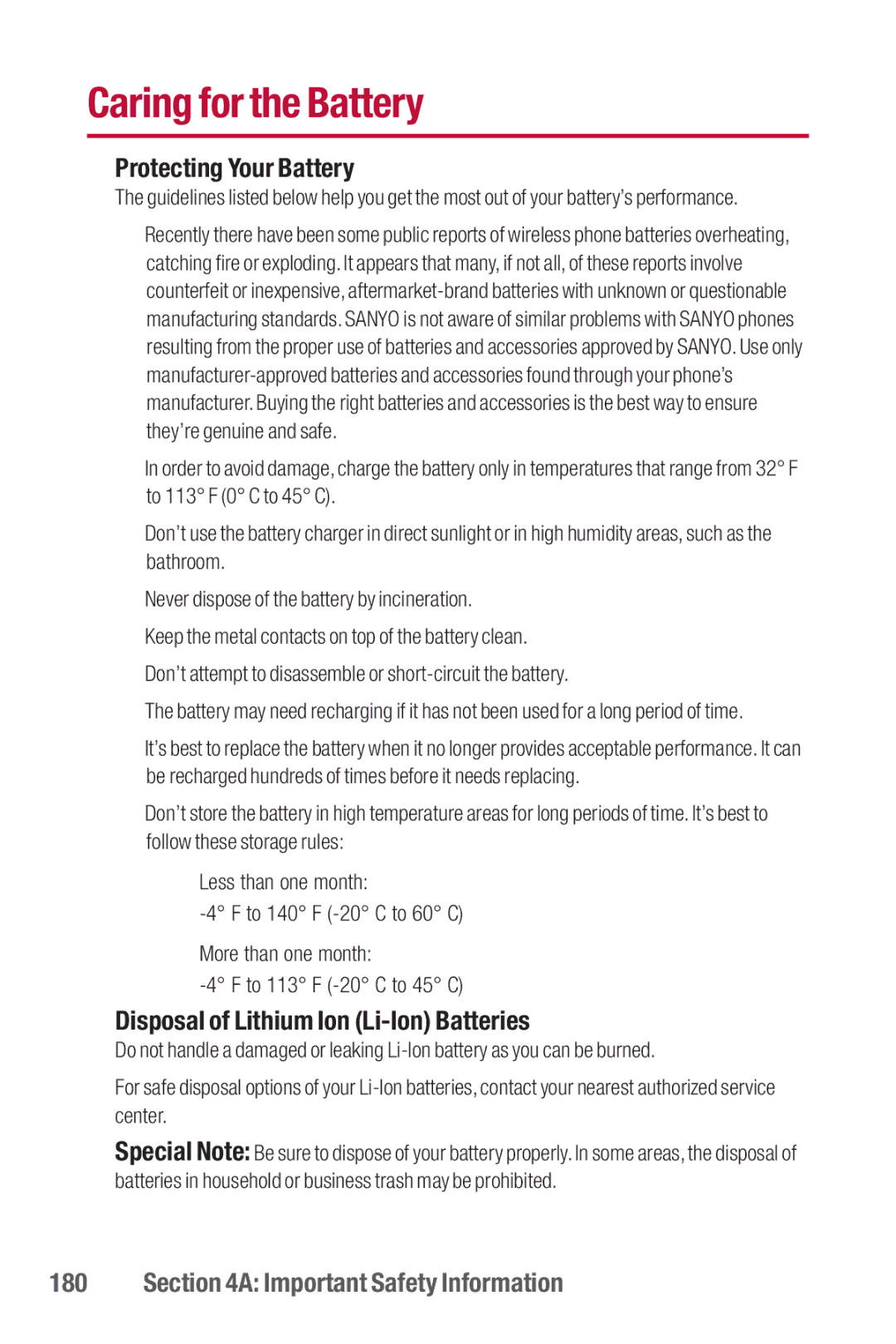Caring for the Battery
Protecting Your Battery
The guidelines listed below help you get the most out of your battery’s performance.
⬤Recently there have been some public reports of wireless phone batteries overheating, catching fire or exploding. It appears that many, if not all, of these reports involve counterfeit or inexpensive,
⬤In order to avoid damage, charge the battery only in temperatures that range from 32° F to 113° F (0° C to 45° C).
⬤Don’t use the battery charger in direct sunlight or in high humidity areas, such as the bathroom.
⬤Never dispose of the battery by incineration.
⬤Keep the metal contacts on top of the battery clean.
⬤Don’t attempt to disassemble or
⬤The battery may need recharging if it has not been used for a long period of time.
⬤It’s best to replace the battery when it no longer provides acceptable performance. It can be recharged hundreds of times before it needs replacing.
⬤Don’t store the battery in high temperature areas for long periods of time. It’s best to follow these storage rules:
Less than one month:
More than one month:
Disposal of Lithium Ion (Li-Ion) Batteries
Do not handle a damaged or leaking
For safe disposal options of your
Special Note: Be sure to dispose of your battery properly. In some areas, the disposal of batteries in household or business trash may be prohibited.
